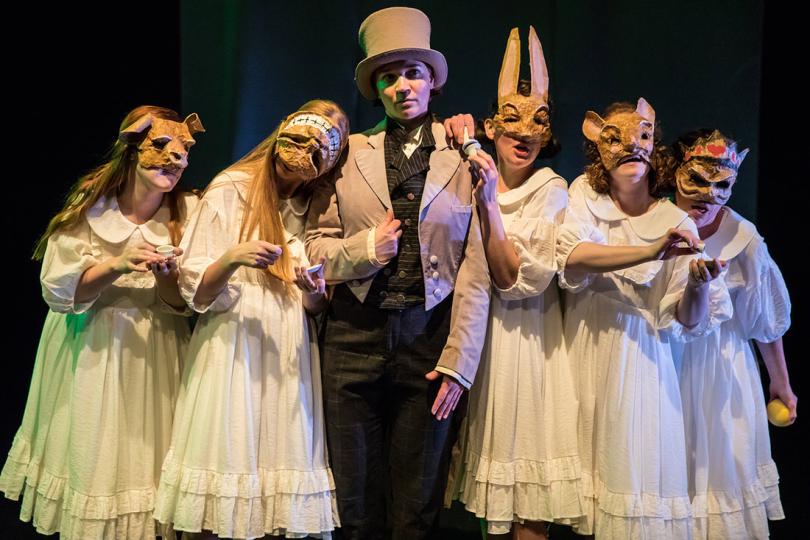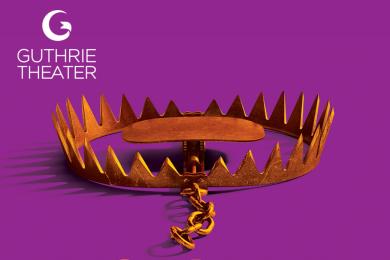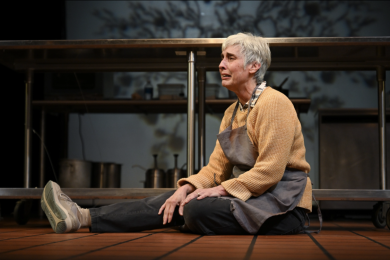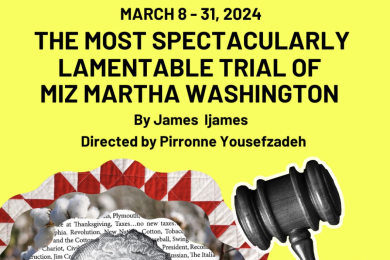A One-of-a-kind Event

Call it a mini-Fringe, a Halloween anomaly, or just a chance for some established artists to get a little weird — Seven years into the Twin Cities Horror Theater Festival’s existence, it remains a one-of-a-kind event. There simply aren’t a lot of horror theater festivals in the world, and the fact that this one has not just endured but has continued to grow and thrive is evidence of the unique strength of our local theater scene. Let’s roll through some highlights of this year’s TCHF.
Bug Girl
You don’t necessarily come into the Horror Festival expecting to see a child-focused shadow puppet riff on Kafka’s Metamorphosis, but it’s another testament to the diverse pleasures of TCHF that you don’t necessarily come in not expecting that either. Perhaps the most singular entry in a singular event full of singular shows, Bug Girl is a thrilling audio and visual experience that really can’t be compared to much else.
Originally conceived by director Liz Howls as a five-minute play, Bug Girl remains the shortest production in the festival, but it's hard to think audiences will feel they haven't gotten their money's worth. This isn’t the simple, monochromatic production that uninitiated viewers might assume. The story of a misfit child who develops a symbiotic relationship with some household insects unfolds via multi-colored puppet images rear-projected against a trio of white screens. The imagery is haunting rather than terrifying, coupling with Dan Dukich’s entrancing ambient sound design to create an off-kilter theatrical experience that bubbles with otherworldly energy.
This installment of Bug Girl is intended as the first chapter in an ongoing series of connected productions. Watching Howls and company develop their story as well as their artistry promises to be one of the more unique experiences in local theater in the coming years.
An Improvised Spooky Musical
If you’re a fan of the local improv scene, you’ll likely already know that The Shrieking Harpies are about as close to a sure thing as you can hope for with improv. For those unfamiliar with the group, though, their aptitude for composing an hour-long musical on the fly will look something close to miraculous. Comedians Lizzie Gardner, Taj Ruler, and Hannah Wydeven, along with pianist Justin Nellis have performed together for long enough that they can effectively read each other’s minds, yet they’re also fully capable of surprising each other.
The Harpies’ Horror Fest performance adds another layer to their skill set: a deep knowledge and fondness for horror tropes. Their Friday night performance began with a one-word prompt pulled from a bucket — “Ghosts,” in this case — and quickly gelled into a fully realized narrative of a teenager who sees dead people trying to appease the meddlesome poltergeist haunting her family’s new house. As per usual with a Harpies show, this was a consistently funny, impeccably tuneful, and occasionally even poignant hour of musical comedy.
… And What Alice Found There
While the world of Charles Dodgson, aka Lewis Carroll, may not fit conventional definitions of horror, it’s unquestionably in the realm of the weird. Winding Sheet Outfit’s … And What Alice Found There folds that weirdness into the mundane with a cerebral, darkly playful dive into the murky life of the Alice in Wonderland creator. As played by Kristina Fjellman, this Dodgson is a natural-born misfit unable to get comfortable in the realm of adults. Flanked by a taunting chorus of young girls who double as his fictional characters, Dodgson mounts a nebulous defense for his art and methods, with a particular focus on his relationship with his real-life niece/muse Alice.
Director Amber Bjork's play doesn't shy away from the consistent questions about Dodgson's sexual proclivities and his friendships with young girls, but this show is much more interested in the provable damage done to the real-life Alice. Megan Campbell Lagas plays her as both a young innocent and a wounded adult who's spent her whole life fending off intrusive questions and salacious speculation brought on by a relationship whose boundaries she couldn't dictate.
There are a lot of heavy concepts at play here, clearly. They're nicely served by a cacophonous script that mirrors the frequently chaotic tenor of Carroll's prose. Even with the constant whirl and jabber of the chorus, this is a very talky show, and the subtext is made text a little more often than preferable. Still, it's an engaging, energetic production with the guts to explore its subject's darkest corners without feeling exploitative or tawdry. If only the real-life Carroll could've said the same.
Frankenstein
The annual contribution from Dangerous Productions is probably the most anticipated show of any given Horror Festival. The company has built a reputation for its innovative use of onstage gore in service of taut, multi-genre thrillers. This year finds Dangerous reviving what’s become its signature show, an arms-length take on Frankenstein that’s inspired by Mary Shelley’s classic more than adapted from it.
Horror Festival audiences first met the Dangerous Frankenstein in 2014. Appropriately enough, it’s gone through some body modifications as it’s been restaged at Fringe and other venues over the past half-decade.The latest incarnation is narratively tighter and somewhat less gory than the original edition, and it's all the more effective for those changes.
The story follows troubled amateur biologist Victor managing awkwardly flirtatious relationships with his girlfriend Elizabeth and neighbor Henry, while conducting bloody experiments in the basement. While the trademark gore remains impressive and grisly—you're unlikely to see a more memorable disembowelment on stage this year — it's the direction and lightning design that make the biggest impact. The show is lit mostly with handheld flashlights that change hands and angles with strategic precision, allowing startling reveals and sudden changes in perspective that create nerve-jangling tension in the otherwise pitch-dark theater. It's a sober, gruesome, exploration of repression, sexuality, and isolation that's only grown more effective as it's evolved.
Feminine Inhuman
The annual Erin Sheppard Presents production is maybe the trickiest Horror Festival sell for the uninitiated. Dance isn’t the first genre most folks associate with horror, after all. Over the past five years, though, ESP has emerged as arguably the single most consistent element of TCHF. Combining energetic, narrative choreography with storytelling and expertly curated musical selections, it’s a distinctive showcase of macabre expression.
The storytelling for this year’s Feminine Inhuman is handled by Matthew Kessen, whose comedy-tinged “monster lectures” have been highlights of several previous TCHFs. Kessen narrates a history of female monsters from various folklore traditions — harpies, sirens, banshees, etc. — with each lecture punctuated by a thematically appropriate dance routine. Set to a driving, beat-heavy soundtrack of artists ranging from The Comet is Coming to Billie Eilish to Kanye West, the dance numbers are high-energy, frenetic affairs that should appeal even to people who don’t think they like dance shows. Combined with Kessen’s unique form of baritone edutainment, this is yet another experience that you just won’t find outside of TCHF.
The Rule of Threes
Four Humors has a long reputation for taking risks and delivering quality, thought-provoking comedy, traits that have served them well in previous TCHF entries like Doll Collection, Mortem Campiendum, and Harold. The company stays true to form with this year’s triptych The Rule of Threes. As per the name, this is an anthology of three performances: a sci-fi thriller about a near-future scenario where identity theft has taken on a frightening new dimension, a video comedy about a magical vape pen that reveals its users fates, and a bleak drama following an ill-fated pioneer expedition beset by monsters.
The downside of this program is that it’s both too much and too little of a good thing. Each of the three pieces is enticing enough on its own that it’s hard not to wish the group had chosen one and developed it into a standalone production. The Kafka-esque first show in particular makes splendid use of the cast’s unique charms, with Ryan Lear as a distressed academic and Brant Miller and Matt Sprang running a darkly comic good-cop-bad-cop routine. There are some big ideas about technology and identity at play here, and it would’ve been fun to see how far the group could push them with a little more room to move.
As it stands, The Rule of Threes is a satisfying hour of theater that delivers as many laughs and surprises as Four Humors fans have come to expect. It’s just also an hour that might’ve been more impactful if its wit were less constrained by brevity.




